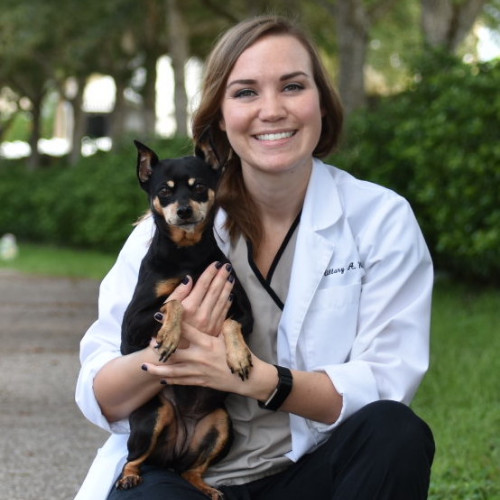No, pork rinds are not safe for dogs. Cooked or fried pork rinds are rich in fats, which might cause health issues in your dog. Raw pig rinds used to produce handmade pork cracklings are dangerous because raw swine flesh may contain trichinella spiralis larvae, which can cause trichinosis in dogs.

Caution: This food is generally considered risky by the veterinary community. Dogs should not eat this food and should be monitored for adverse effects.
| Food Safety | Exercise caution, avoid feeding |
| Nutritional Issues | Fat, sodium, unhealthy oils, toxic condiments |
| Potential Risks | Trichinosis, obesity, pancreatitis |
| Poisoning Symptoms | Diarrhea, vomiting, stomach issues, tremors, excessive urination |
Pet owners should be extra cautious when offering human snack foods to their dogs. One such food item is pork rinds, a popular snack made from fried or roasted pigskin.
How Many Pork Rinds are Unsafe for Dogs?
While a single bite or one fried pork rind might not necessarily require an urgent trip to the veterinarian, it’s best to avoid giving these treats to your furry friend altogether. If they accidentally eat some there is no need to worry, but continued snacking on these salty treats would pose health risks.
What Makes Pork Rinds Unsafe?
Pork rinds are nutritionally unnecessary for your pup, in fact they pose many risks to their health in the long run. They are calorie dense, high in fat and low in essential vitamins and minerals. The following are the risks which make pork rinds unsafe.
- High Fat Content: Pork rinds are notoriously high in fat. Consuming too much fat can lead to a host of health issues for dogs, such as obesity, pancreatitis, and gastrointestinal upset. A high-fat diet can also strain a dog’s liver and kidneys, leading to long-term damage.
- Excessive Sodium: Pork rinds are typically seasoned with a significant amount of salt to boost up their flavor. A dog’s diet should contain only a limited amount of sodium, as excessive intake can cause health issues like high blood pressure, kidney disease, and heart problems.
- Risk of Choking or Blockage: The texture of pork rinds can be problematic for dogs. They can become lodged in a dog’s throat or digestive tract, potentially causing choking, blockage and scratching of the throat. In some cases, surgical intervention may be required to remove the obstruction.
- Allergies: Some dogs can develop allergies to specific proteins, including pork. While this is not true for all dogs, it’s worth considering that feeding pork rinds could trigger an allergic reaction in some pets.
- Unsafe Flavors: Flavored pork rinds could pose an additional risky elements like garlic, onion, preservatives and sugar, which are harmful and toxic.
Signs Your Dog Ate Too Many Pork Rinds
What should you do if you suspect your dog ate pork rinds? If your dog consumes a small amount of pork rinds, monitor them closely for signs of gastrointestinal upset, such as vomiting, diarrhea, or abdominal pain. If these symptoms occur or if your dog appears to be in distress, contact your veterinarian immediately.
In the case of larger amounts or frequent consumption, consult with your veterinarian to discuss potential risks and the need for a check-up. If your dog has been gaining weight, urinating excessively, or exhibiting vomiting or diarrhea then discuss it with the vet. Regular veterinary visits are crucial to ensure your dog remains healthy and happy.
Alternatives to Pork Rinds
There are numerous healthier alternatives to pork rinds that you can provide for your dog as treats. Look for low-fat, low-sodium options, such as lean meats, vegetables, or even specially formulated dog treats. Opt for healthier, more nutritious treat options to keep your furry companion in top shape. Always consult with your veterinarian for recommendations tailored to your pet’s specific dietary needs and preferences.
Common Pork Rind Ingredients
- Pork skin- Pork skin is unsafe for dogs because it contains large amounts of fats. This can lead to pancreatitis and weight gain in dogs.
- Salt– All pork rinds contain salt. Such high levels of salt can cause various health issues in dogs.
- Garlic/Onion– Both onion and garlic powder are unsafe because they contain the chemical thiosulfate, which is poisonous for dogs.
- Cinnamon– Cinnamon-flavored pork rinds can be toxic. However, cinnamon on its own is safe for dogs in moderation.
Frequently Asked Questions
-
No, it would be best not to feed your dog pork rinds. This human food contains various ingredients that are toxic for dogs.
-
The salt, fat, and condiments, such as garlic, inside pork rinds, make them highly unsafe for dogs. So, it would be best to look for dog-friendly varieties instead.
-
Pork rinds are high in fat, salt, and other ingredients that can be toxic to your dog’s health. Hence, it’s best to avoid pork rinds, even as an occasional treat.







